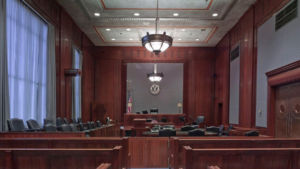The Civil Litigation Process Explained
 By: Attorneys Jennifer N. Brown and Evan M. Mayer – Weld Riley, S.C.
By: Attorneys Jennifer N. Brown and Evan M. Mayer – Weld Riley, S.C.
A lawsuit can be a confusing and intimidating time. More likely than not, your infrequent brushes with the law may leave you clueless as to what your lawyer is doing with all the information you are sharing with them. Whether you are a plaintiff (the person bringing the lawsuit) or a defendant (the person being sued), a broad overview of the procedure in a lawsuit may help lower the confusion.

Summons and Complaint. These two documents start a lawsuit. The summons serves to provide notice that you must appear in front of a court and that a person is bringing a suit against you. A complaint lays out the facts and legal reasoning as to why the lawsuit began. In short, a complaint should explain why the plaintiff should win the lawsuit and how the defendant can fix the situation. These documents are filed with the court and given to the defendant or defendants.
Answer. As the name suggests, the answer is a defendant’s chance to reply to the plaintiff’s complaint. In the answer, the defendant replies to each allegation the plaintiff made, either admitting or denying the allegation. The answer also provides an opportunity for the defendant to defend themselves against the claim. For example, if the plaintiff is saying the defendant stole his lawn mower, in the answer the defendant can say he did take the plaintiff’s lawnmower but it was with the plaintiff’s permission. Finally, in the answer, a defendant can assert his own claims against the plaintiff.
Discovery. Discovery is the gathering of evidence to support what each party claimed in their complaint and answer. Discovery can take many forms including written questions (interrogatories), requests for documents, and oral testimony under oath (deposition). In discovery, almost anything related to the subject matter of the case is discoverable. During discovery, the attorneys weigh the strength of the case and determine the likelihood of success.
Pre-trial Motions. All the evidence in discovery does little good if it cannot be used to prove the case. In pre-trial motions, lawyers will battle back and forth to try and convince the judge that evidence should be admitted at trial. The lawyers will also ask the judge to get rid of claims and defenses the evidence does not support so that when the time comes for trial the issues are narrow. If trial is a battle, these motions set the terms and conditions on which the battle will be fought.
Trial. Everyone with access to a TV has seen a trial. Whether the trial is in front of a judge or a jury, a lawyer’s job is to use the evidence gathered in discovery to convince a judge or jury that their client is right.
Post-trial Motions. A lawsuit does not end when a judge announces his decision or the jury states their findings. After a judgment has been given, the losing side gets a chance to ask the judge to reconsider or can file an appeal with another court. These motions can be based on a host of issues, including procedural errors by the court or opposing counsel, evidence that should have not been admitted, and even that the jury reached a decision that a reasonable person could not. The trial’s judge may decide these motions or the judge may send them to a higher court to decide.
This broad overview shows how nuanced civil litigation can be, from the filing to the judge’s decision and beyond. Our attorneys are skilled at navigating the procedure and pleading the facts.
If you have any further questions about civil litigation, Jennifer and Evan are both members of the firm’s litigation group and practice in the areas of business litigation, estate litigation, and family law. Jennifer can be reached at the Eau Claire and Menomonie office at 715-839-7786 and Evan can be reached at the Wausau office at 715-845-8234. You can also visit our website at www.weldriley.com.

